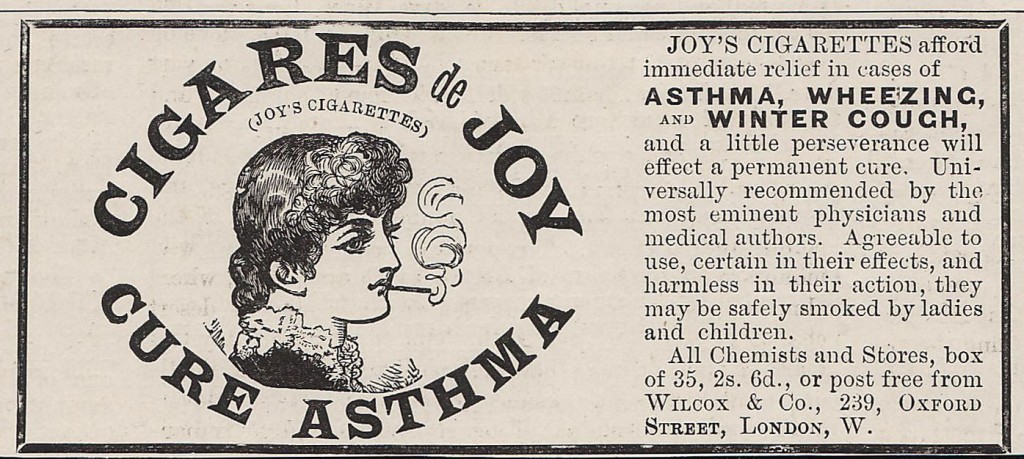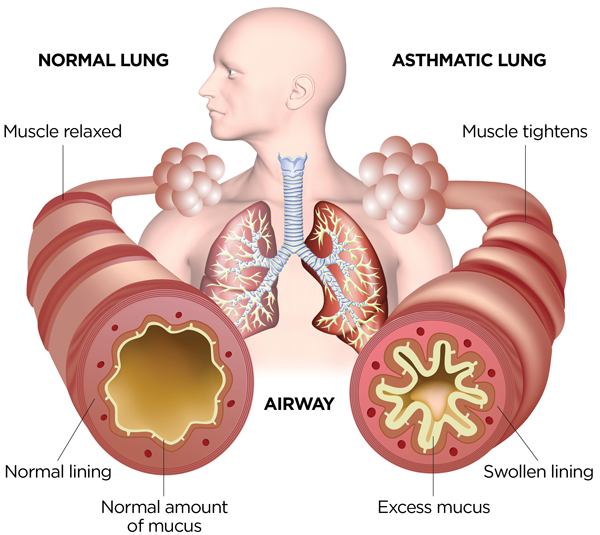
I’m going to have to ask you to cough for me this morning. I know you’ve been up all night coughing, but you have to understand that for a patient such as yourself with known breathing issues, you really need to be more aware of the risks of riding shotgun in Josh Gordon’s Escalade on a slow cruise through downtown. Have some water – and maybe one of these laudanum throat lozenges in the meantime. Once you’ve stopped coughing, maybe give this a read. I’ll be back in a few minutes with your prescription.

ASTHMA: NOT A JUST A DISEASE FOR SCHOOLYARD PIPSQUEAKS!
What are the positives of this treatment?
Asthmatics have been the butt of jokes for thousands of years; like other diseases highlighted in this series of educational pamphlets, humanity has known of this disease since the earliest days of recorded history. The word takes its name from the ancient Greek azein, referring to panting or breathing hard. As many of you already know, asthma is triggered by many things, but most predominantly environmental and stress-related factors, in particular buildups of dust, pollution, plant pollen, smoke, and cold air. Thanks to advancements in 20th-century treatments using aerosolized corticosteroids to reduce inflammation in the respiratory system, asthma is far less of an issue than it used to be, though, in developing countries, access to inhalers remains an ongoing issue.


Part of the popularity of smoking stramonium was that in small quantities, it was believed to prevent the spasms of irritated bronchial linings, which further exacerbated asthma symptoms. It was also a wicked painkiller – and many people combined it with many other ingredients. Later in the 19th century, medicated cigarettes – which contained various combinations of tobacco, stramonium, belladonna, henbane, cannabis, and even opium – became all the rage as asthma treatments in Europe and North America.
What are the negatives of this treatment?
Stramonium is extremely toxic when consumed regularly. It also causes dry mouth – even more so than a basic tobacco cigarette. Stramonium, when concentrated in powder form and ingested, can also cause extreme hallucinations. Chloroform, too, despite its extremely frequent use as an anesthetic, is also extremely dangerous, as the vapor can easily stop the heart if too much is present.

Stramonium also contains anticholinergic agents like hyoscyamine and scopolamine, which have similar effects to adrenaline, which is naturally produced by the human body. In theory, adding adrenaline or similar messenger blockers to a body already starved for air could potentially be really harmful to the heart… but not enough evidence has been conducted yet to conclude this definitively.
What are some real-life examples of this treatment?
As the popularity of smoking as an asthma treatment began to wane in the early 20th century, there was a brief period between the 1930s and 1950s when asthma was predominantly treated as a psychosomatic illness. While it is indeed true that asthmatics do tend to have poorer mental health and are more prone to comorbid mental illnesses like depression and anxiety, this is by no means the actual root cause of their ailment. Nonetheless, some physicians prescribed antidepressants and sedatives to asthmatics in order to treat asthma… but these are only truly effective when coupled with anti-inflammatory drugs, especially corticosteroids. Cognitive behavioral therapy can be a useful tool, but certainly not as a standalone method for a disease that has so many complex triggers.
Big tobacco kept pushing medicated cigarettes well into the 1950s, even as physicians across the world became aware of the true harmful nature of cigarette smoke. When medicated cigarettes eventually fell out of favor by the middle of the century, cigarette companies had to pivot to other products to keep revenues flowing.
How can we improve this treatment for the future?
Thanks to the Dangerous Drugs Act of 1920, we have not had nearly enough opportunity to figure out how to combine common inhalers with other more interesting drugs such as cannabis and opium. Legally, that is. Soon, we’ll all have our chance to shine… so long as the NFL can provide political cover for us sports doctors to get back to what we do best. By that, I mean, of course, the ability to cause immense amounts of physical and mental harm in exchange for millions of dollars and ample short-term gratification. We’ll have our OxyContin blunts as part of our modern asthma treatments soon if I finally have my way with things. In the meantime, here’s your prescription. I know it’s not exciting, but remember – I’m currently on the clock. Come back after dinnertime if you want a more fun referral. And bring cash.
***
Information for this article taken from here, here, here, here, here, here, here, here, here, here, here, here, here, here, here, here, here, here, here, here, here, and here.
Chlorophyll? More like bore-aphyll!
What’s that? It was chloroform?
/hides from Darren Sharper
Wut is Big Inhaler hiding from you about the benefits of smoking crack??
Big Inhaler? You mean Laremy Tunsil?
Looking forward to my cannabis inhaler to treat the sucks to my ashmar
I think they call those vapes, but I don’t know what you kids get up to with your reefers and your crazy dances!
I recall being in a doctor’s office as an eight year-old and the guy was puffing away while explaining to me how my asthma medication worked. My teeny brain said to me, ‘there’s something vaguely wrong here’.
My Grandfather was a doctor. Smoked like a chimney, in Pittsburgh, with the steel mills going full blast 24/7. You’ll be shocked to hear he died of lung cancer in his 60’s.
“…access to inhalers remains an ongoing issue.”
– Andy Reid, Chairing a panel on food delivery advancements